Article
Spondyloepiphyseal Dysplasia
An inherited dysplasia involving the ends of the bones (epiphyses) and the spine, the condition in this 82-year-old patient manifested in mid-life but remained undiagnosed for decades.
An 82-year-old man presented with longstanding bilateral hip pain.
The patient had had prior cervical spine surgery but reported no history of previous trauma.
Radiographs of the pelvis (below) demonstrate markedly abnormal/dysplastic femoral heads with severe arthrosis of both hips, remodelled acetabulae, and foreshortened femoral necks with coxa vara deformity
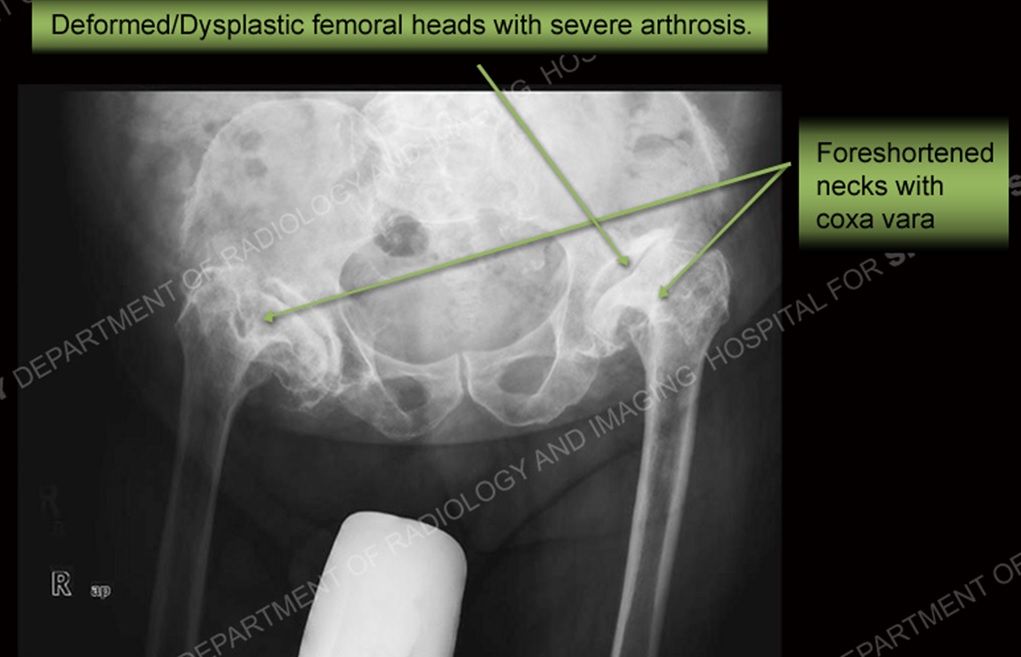
For more radiographic findings, go to the next page.
© 2011 Hospital for Special Surgery. All rights reserved.
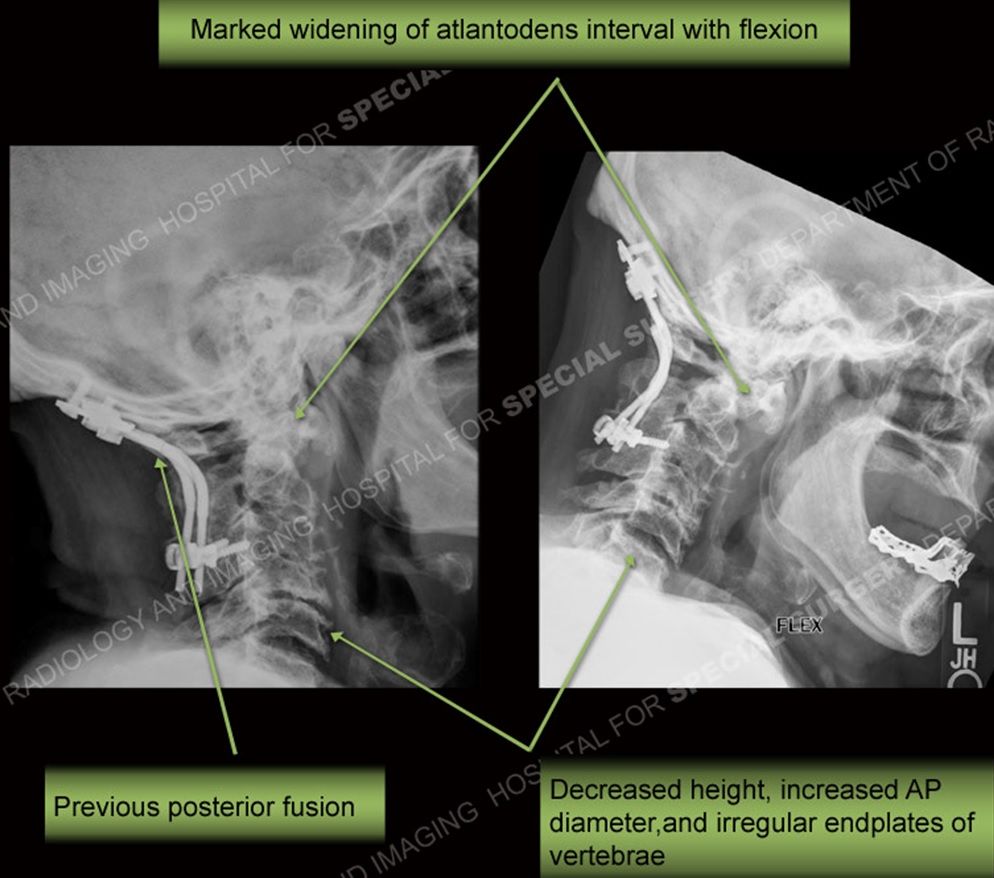
Cervical spine radiographs demonstrate previous occipito-cervical fusion with poor delineation of the upper cervical spine architecture. However, noted is a marked widening of the atlantodental interval when comparing the neutral to the flexion views.
Go to the next page.
Findings:
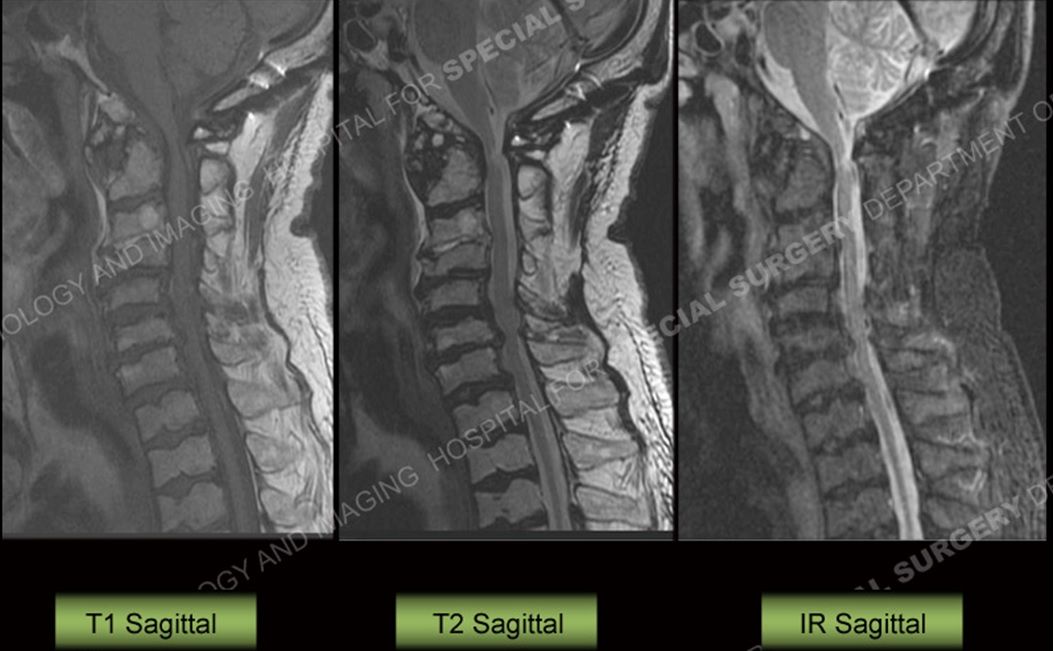
Cross sectional imaging of the cervical spine demonstrates decreased height of the vertebral bodies with increased AP diameter and prominent end plate irregularities (above).
There are multiple non-fused ossification centers seen at the tip of the dens and with an overall decreased amount of bone at the dens than typically seen.
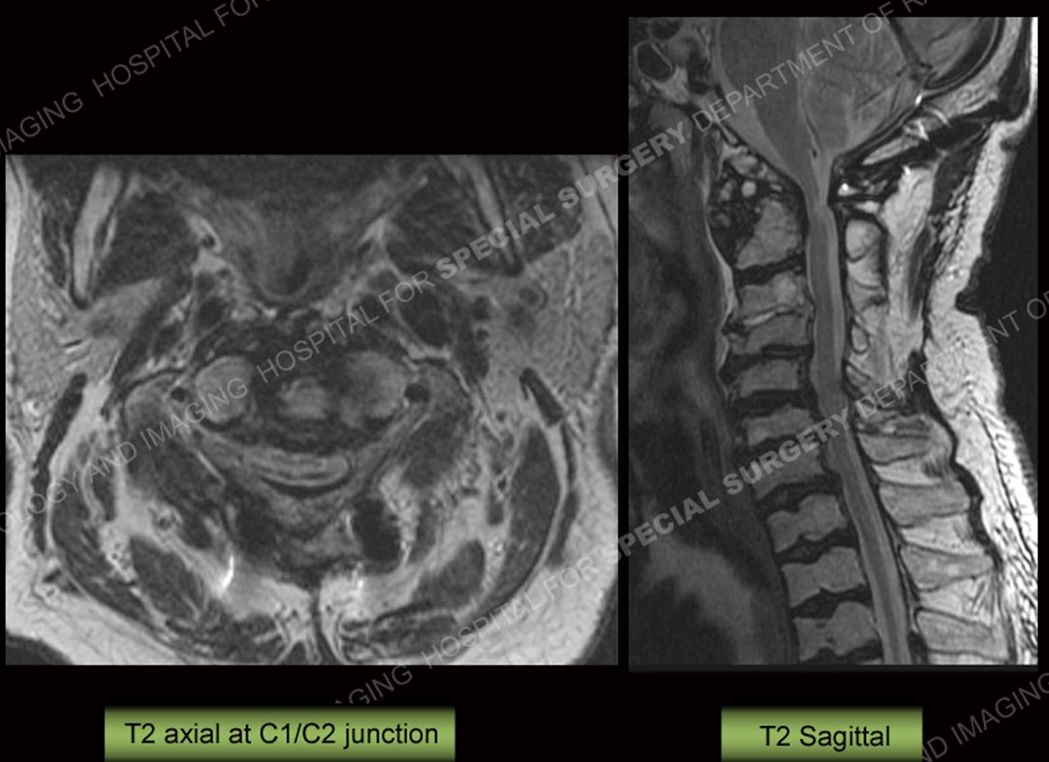
Severe stenosis is seen at the C1/C2 junction with severe compression of the cord and high signal within the cord (below) representing edema/myelomalacia. Underlying developmental spinal stenosis is also seen.
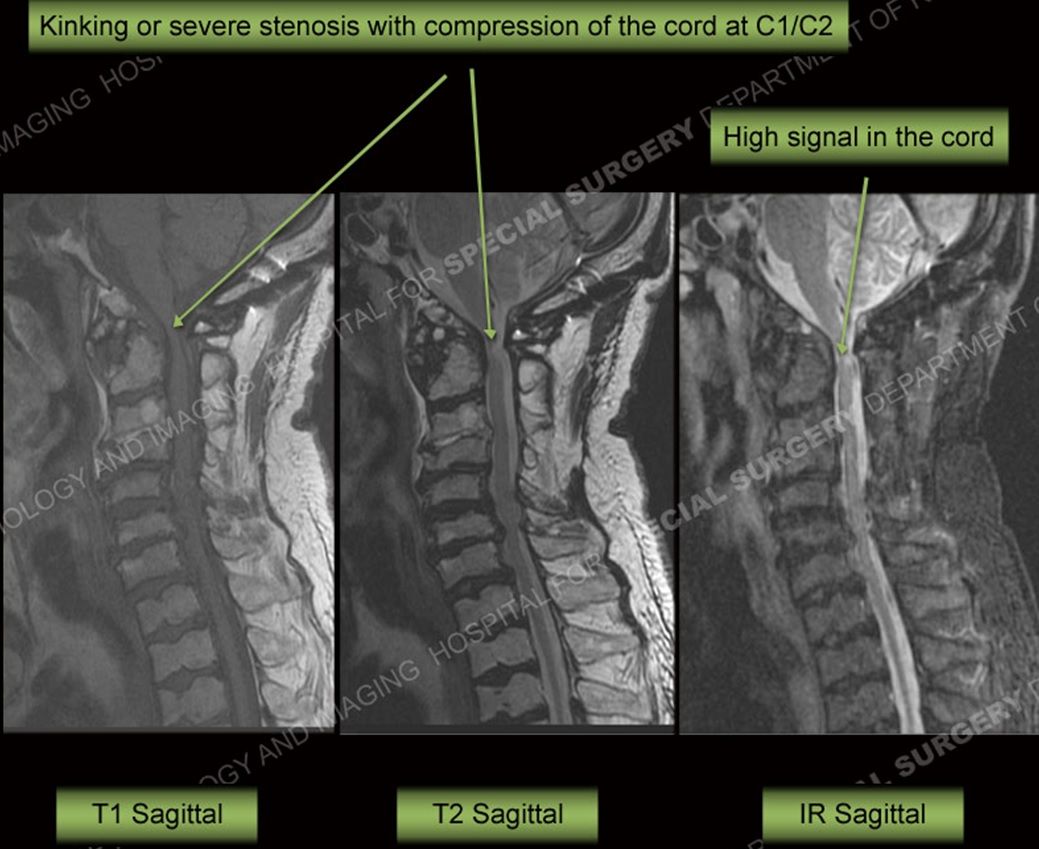
For information about the diagnosis, go to the next page.
Diagnosis: Spondyloepiphyseal Dysplasia (SED)
SED is an inherited dysplasia that involves the ends of the bones or epiphyses and the spine. It comes in two variants, congenita (present at birth) and tarda which has a normal appearance at birth and then develops at 4 years of age and older.
Given the underlying dysplasia there is premature osteoarthritis which in this patient may have been neglected.
In the spine, there is typically a hypoplastic dens which leads to spinal instability and as in this patient leads to fusion to help prevent a catastrophic event. The presence of an os odontoideum or non fused tip of the dens (below) may be seen but is not as typically present.
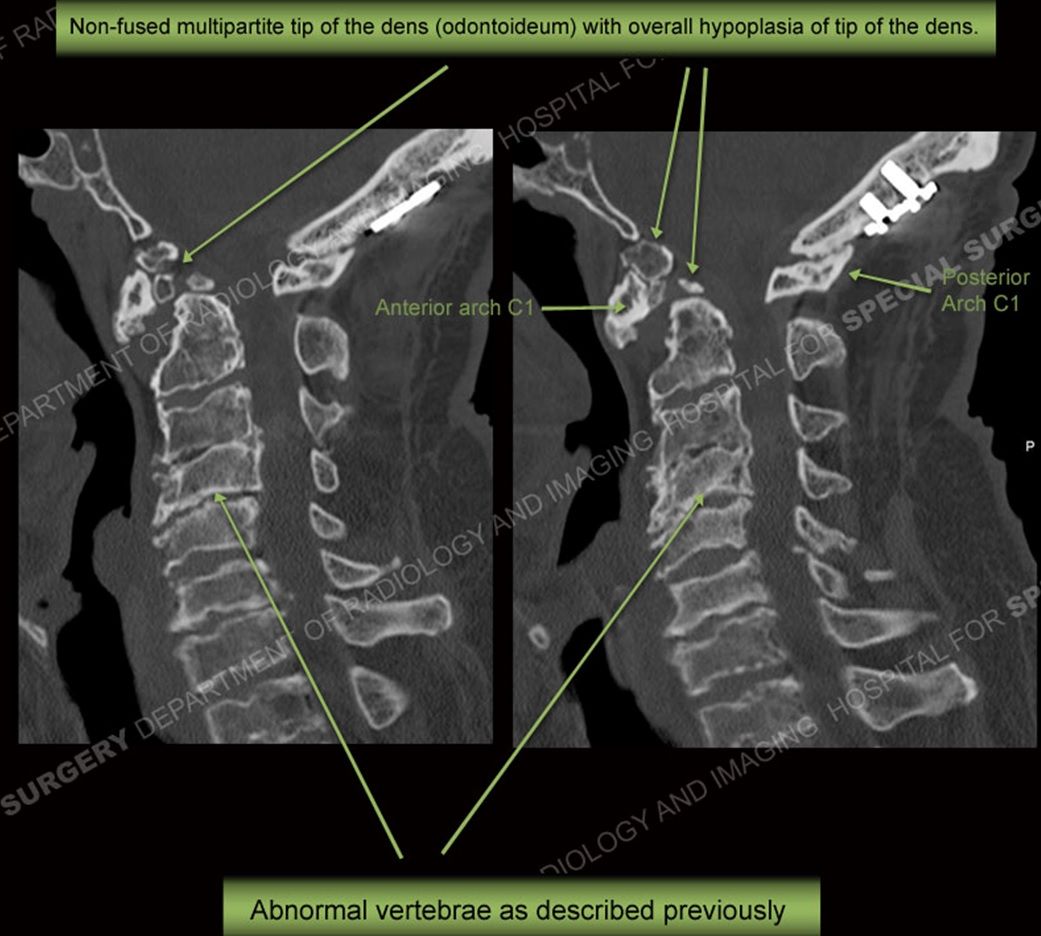
For discussion, see the next page.
Discussion
The vertebral bodies are decreased in height and at times may be completely flat yielding platyspondyly. Ovoid or trapezoidal bodies in the pediatric patient typically than yield vertebrae in the adult with decreased height, increased AP diameter, and end plate irregularities as seen here. Severe stenosis or C1/C2 kinking (see below) may be found as compared to the typical cervicomedullary kinking found in achondroplasia.
In this patient, no myelopathic symptoms were present, astonishingly so. Imaging of the other appendicular structures would have shown multiple areas of epiphyseal dysplasia and advanced arthrosis.

Adapted from the teaching files of the Department of Radiology and Imaging at Hospital for Special Surgery.




